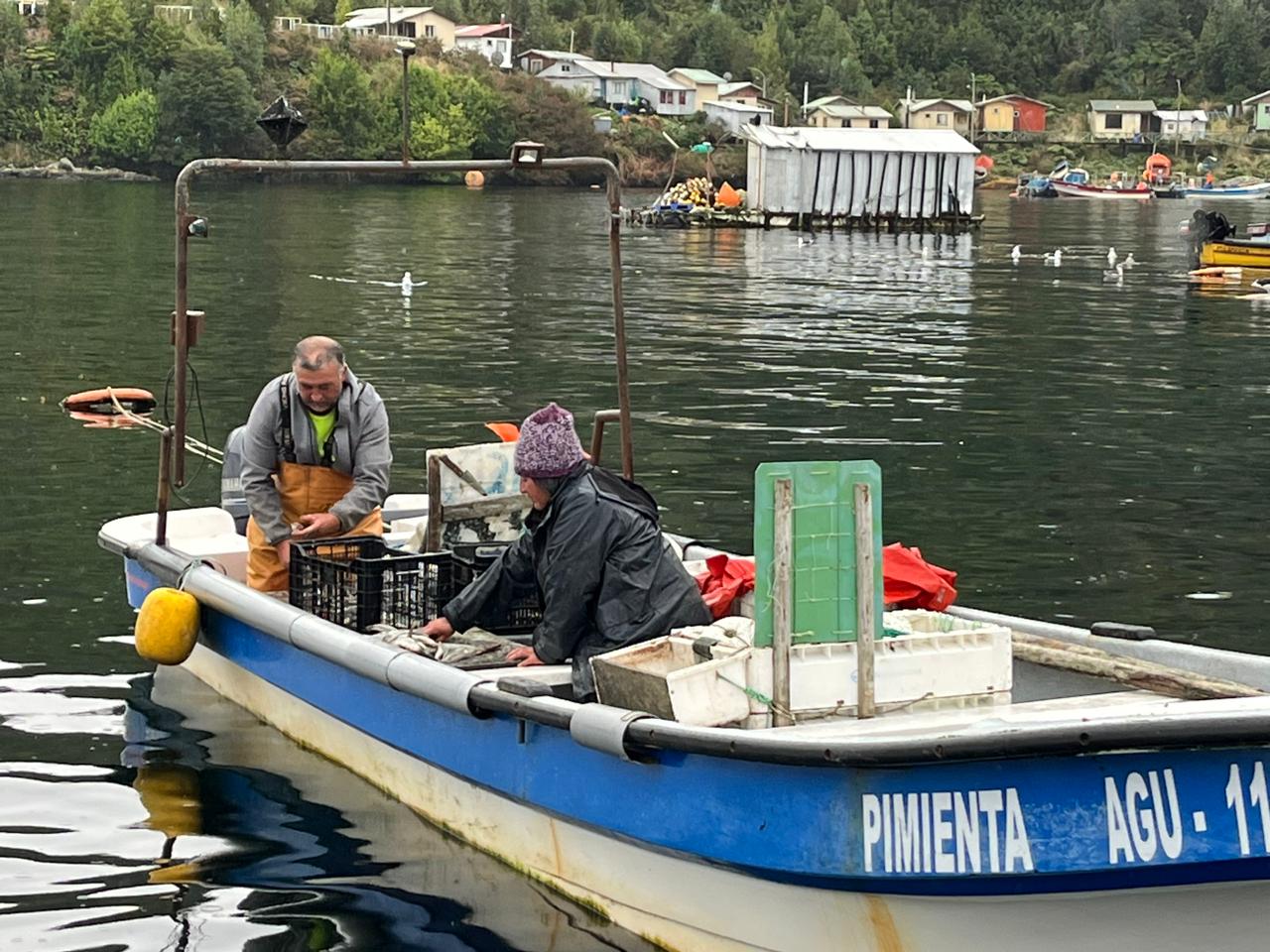
Challenges in austral hake supply chains
Three years ago, when we approached the communities of Puerto Gala and Puerto Gaviota in Aysén, we began to see the logistical challenge of creating complementary routes for the austral hake supply chains. Simply getting there was a complex journey for our teams. How could we design systems to do the reverse, bringing fish from there to people’s tables while maintaining legality, quality, and traceability?
This was important because austral hake is vital for artisanal fishing in the Aysén region, Chile. However, most catches don’t reach Chilean tables, and paradoxically, even less so in Aysén. To change this, we worked with local communities, government bodies, and private organizations. The journey of hake from the sea to consumers’ tables is a complex process involving multiple stakeholders, different logistical routes, and a distribution system reflecting the geographic and commercial reality of this area. Our efforts paid off, and for almost two years now, fillets of austral hake from the northern coast of the region have been available in Aysén’s stores and online platforms in the metropolitan region. Over 2,200 kilos have been marketed.
Most of these new products stay in Aysén, but some also travel to the Metropolitan Region, crossing a challenging path. Here’s a bit about that journey.
Logistical routes for distribution
From the start, we’ve tested several routes, finally consolidating the ones currently used. Together with local fishermen, we identified three main routes: 1. Puerto Gaviota – Coyhaique, 2. Puerto Gala – Coyhaique, and 3. Puerto Gala – Metropolitan Region.
The process starts at the docks of Puerto Gala and Puerto Gaviota, where fishermen land their catch. Local teams are ready to receive and preserve the raw material in optimal condition, using low temperatures and storing the fish in poly boxes with ice. This wouldn’t be possible without leaders like Carolina Paté, the local coordinator in Gala. From here, the hake is transported by transport boats to Dalcahue – Chiloé, or by the Naviera Austral ferry, used by anyone entering or leaving Puerto Gala. In the first case, the raw material is received in Dalcahue at Pesquera Los Elefantes, where it is classified, filleted, and vacuum-packed. The second case is more complex. Poly boxes are loaded onto the Queulat ferry, typically on Sunday mornings, with great effort by local boats and several people. In Puerto Gala, there are neither trucks nor roads. The product then travels over ten hours to Puerto Chacabuco, but first, something interesting happens. The poly boxes are combined with a similar load from Puerto Gaviota. In a logistical effort, the activities at Gala and Gaviota are coordinated to happen almost simultaneously, despite being hours apart, so that both loads are consolidated onto a truck at Puerto Gaviota (unlike Gala, there is a ramp here for trucks to unload the fish from the boats). The truck with both loads then travels another 6 hours to Puerto Chacabuco, the main port of the region.
Meanwhile, the other shipment from Gala to Dalcahue, already processed, begins its land journey first to Puerto Montt, where it is transferred to a consolidated truck headed to Renca in the Metropolitan Region. From there, it is distributed to Santiago and the coast, specifically to the warehouses of the Mi Caleta Foundation, a key player in promoting these products almost two thousand kilometers north of where they’re caught. These shipments represent 20% of the total catch.
The remaining 80% stays in Aysén. We’ve described its incredible journey to Puerto Chacabuco, but how does it reach Aysén residents’ tables? The truck from Puerto Gaviota traveled to Puerto Chacabuco, then another 80 kilometers to the small processing plant of Patagonia Bajo el Mar, a strategic partner for processing, storage, and marketing in Aysén’s four provinces. Here, meticulous marketing takes place to promote this exquisite local product and place it in regional sales points.
In both the Coyhaique and Dalcahue plants, products are labeled with a locally designed logo and QR codes that allow consumers to learn about the people behind the fishing, their boats, and the communities of Puerto Gala and Puerto Gaviota.
Processing and quality assurance and sustainable fishing practices
Simply put, the journey of austral hake from northern Aysén to consumers’ tables is a logistical feat. The unique geography, climatic conditions, and reliance on maritime transport schedules make the supply chain a constant challenge. The combination of boat, ferry, and refrigerated truck transport requires precise coordination to ensure the fish remains fresh. Nevertheless, within 48 hours of being caught, the fish is processed and stored, ensuring a high-quality product.
Fishing communities play a crucial role in this process. Artisanal fishermen, besides catching the resource, must ensure the hake remains in optimal condition throughout the journey. Collaboration among our professionals (led by Gabriela Nuñez), fishermen, transporters, and processing plants is key to maintaining product quality and meeting market demands.
Another crucial factor in this value chain is the sustainability of the fishery. The austral hake is regulated by catch quotas and monitored by organizations like SERNAPESCA, which oversee our operations. This control is essential to prevent overexploitation and ensure that artisanal fishing remains viable.
However, barriers still exist. Inadequate infrastructure at some points in the chain, high transportation costs, and competition with imported products hinder market expansion for austral hake. We are working to promote initiatives that enhance operational and commercial capacity and more efficient logistics at the source, key elements to boost this fishery and directly benefit coastal communities.
The route of the austral hake reflects the effort, tradition, and resilience of Aysén’s fishermen. From the coast to urban markets, every step in its journey testifies to the collaborative work needed to bring a quality product to Chilean tables.
Originally published in Spanish.
Published Jun 19, 2025




